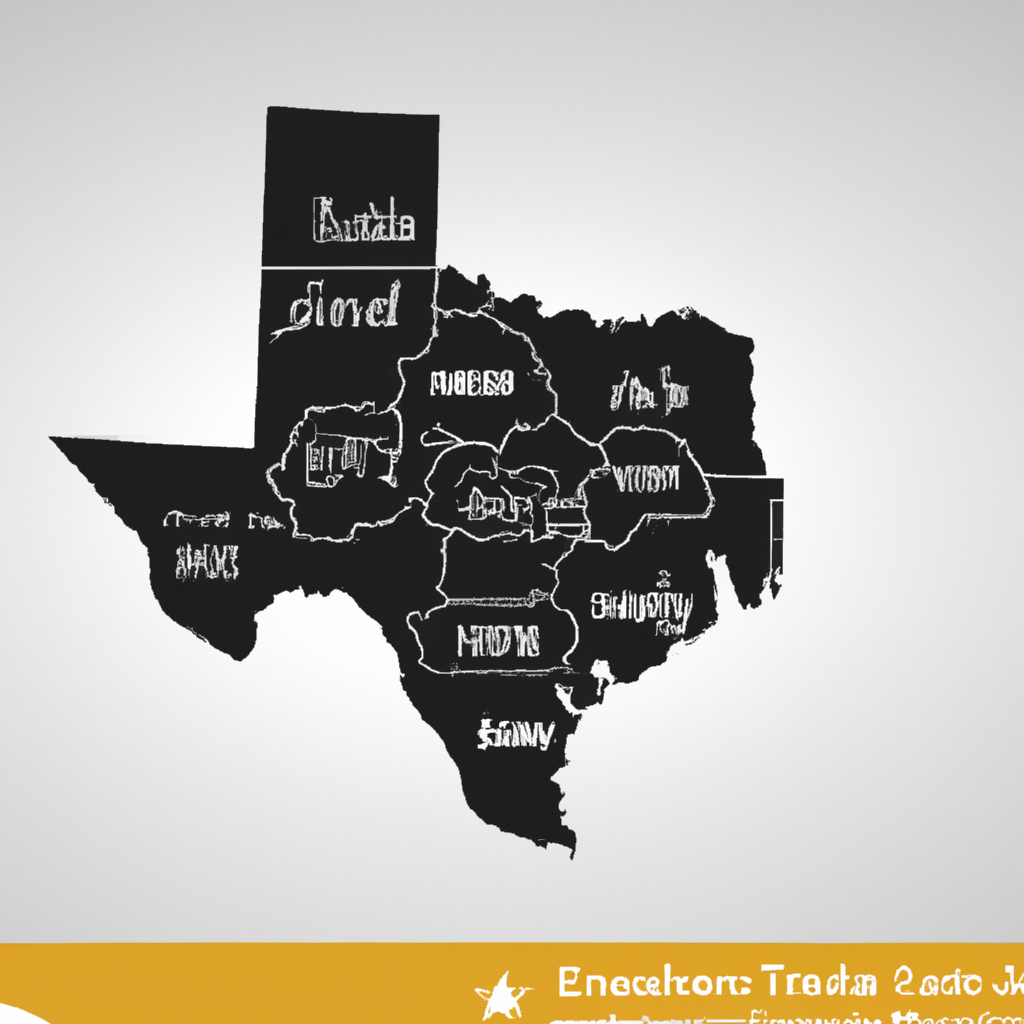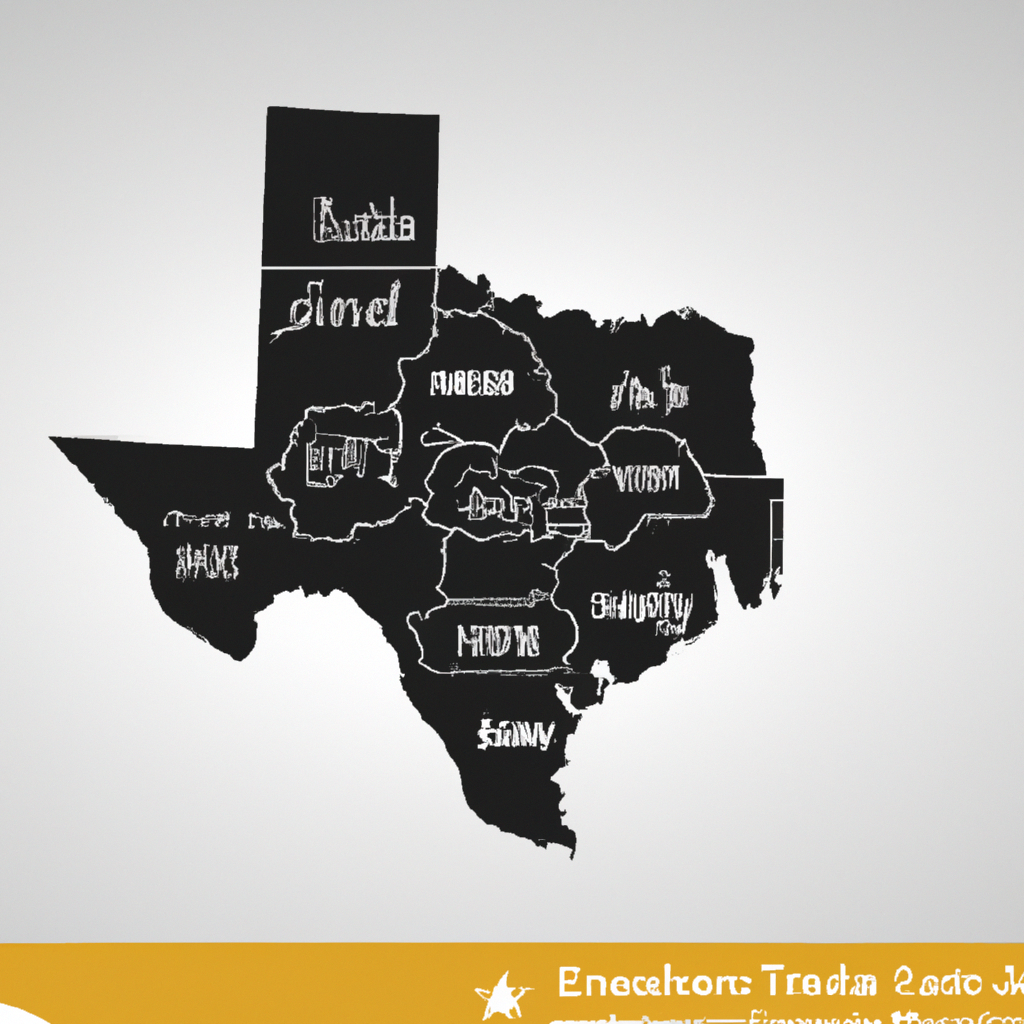Located in the Southern United States, Texas is renowned for its diverse landscapes, bustling cities, and thriving economy. As you consider the prospect of relocating or simply curious about the state’s quality of life, it is important to delve into the various aspects that contribute to this aspect. From its exceptional education and healthcare systems to its cultural vibrancy and outdoor recreational opportunities, Texas boasts a quality of life that is nothing short of exceptional. In this article, we will explore and assess the different factors that contribute to the overall quality of life in the Lone Star State.

Cost of Living
Housing
Texas has a relatively low cost of living compared to many other states in the United States. The housing market offers a variety of options, from affordable apartments to spacious houses, catering to different budgetary needs. The median home price in Texas is lower than the national average, making homeownership more accessible for residents. Additionally, the state does not levy income tax, which helps individuals allocate more of their earnings towards housing expenses.
Utilities
When it comes to utilities, Texas boasts competitive rates for electricity, water, and natural gas. The deregulated energy market allows consumers to choose from a range of providers, promoting competitive pricing and offering potential savings. The cost of water and sewage services also remains fairly affordable across the state. With these reasonable utility costs, residents can manage their monthly expenses effectively.
Transportation
Texas is known for its vast landscapes and expansive road networks, which offer reliable and efficient transportation options for residents. The state invests in maintaining and improving its infrastructure, resulting in well-maintained roads and bridges. Additionally, the availability of public transportation, including buses, light rails, and train services, enhances accessibility and connectivity within and between cities. Texas also has numerous airports, facilitating domestic and international travel for both residents and visitors.
Employment Opportunities
Unemployment Rate
Texas has consistently maintained a low unemployment rate compared to the national average. This can be attributed to the state’s diverse economy, which encompasses various industries such as energy, healthcare, technology, and manufacturing. The favorable business environment, bolstered by a strong entrepreneurial spirit, contributes to job creation and economic growth, resulting in lower unemployment rates and greater employment opportunities for individuals.
Job Growth
Texas has consistently experienced significant job growth, attracting individuals from across the country to pursue employment opportunities. The state’s pro-business policies, favorable tax regulations, and robust infrastructure have attracted major corporations, leading to job opportunities in various sectors. The Austin and Dallas-Fort Worth metropolitan areas, in particular, have witnessed substantial growth in technology and innovation-related industries, providing numerous high-paying jobs.
Median Income
The median income in Texas may vary based on location and occupation, but overall, it offers a favorable balance between cost of living and earnings. The state’s economic diversity ensures opportunities for individuals to find jobs with competitive wages. This median income provides residents with the means to support their families, enjoy a comfortable lifestyle, and contribute to the local economy.
Education
Public Education
Texas places great emphasis on public education, with the state investing significant resources into its public school system. The Texas Education Agency strives to provide quality education to all students, ensuring they receive a well-rounded education and essential skills for future success. The state offers a comprehensive curriculum and encourages student engagement through diverse extracurricular activities. Additionally, Texas boasts reputable public universities, offering a wide range of degree programs for higher education.
Higher Education
Texas is home to several prestigious universities and colleges, attracting domestic and international students seeking quality higher education. Institutions such as the University of Texas, Texas A&M University, and Rice University consistently rank among the top universities in the country. These institutions provide a diverse range of academic programs and research opportunities, contributing to the state’s robust intellectual and scientific landscape.

Healthcare
Health Insurance Coverage
Texas faces challenges regarding health insurance coverage, with a higher percentage of uninsured residents compared to the national average. However, efforts are being made to improve access to healthcare for all Texans. The state has implemented programs such as the Texas Medicaid program and the Children’s Health Insurance Program (CHIP) to provide coverage for low-income individuals and families. Additionally, the Affordable Care Act has expanded access to healthcare for many Texans.
Number of Healthcare Providers
Texas has a sufficient number of healthcare providers, including hospitals, clinics, and medical professionals, to cater to its large population. Major metropolitan areas have a wide range of healthcare facilities offering specialized services and cutting-edge medical technology. However, access to healthcare can be more challenging in rural areas, as they may have fewer healthcare providers and facilities. Efforts are underway to address this issue and ensure equitable access to healthcare across the state.
Crime Rates
Violent Crime Rate
Texas, like any other state, experiences varying levels of crime. However, the overall violent crime rate in Texas has been decreasing in recent years. Law enforcement agencies and community initiatives work together to maintain public safety and reduce crime rates. However, it is essential for residents to remain vigilant and take necessary precautions, particularly in densely populated urban areas.
Property Crime Rate
Similar to the violent crime rate, the property crime rate in Texas has also shown a downward trend. Ongoing efforts from law enforcement agencies, community watch programs, and public awareness campaigns contribute to the prevention and reduction of property crimes. Residents are advised to secure their properties and belongings and report any suspicious activities to local law enforcement authorities.
Natural Disasters
Tornadoes
Texas is located in an area known as “Tornado Alley,” where tornadoes are more prevalent. The state experiences a significant number of tornadoes each year, particularly in the spring season. However, the state has robust emergency management systems in place to monitor weather conditions and issue timely warnings. Residents are encouraged to stay informed of weather updates and have a plan in place to ensure their safety during severe weather events.
Flooding
Flooding can occur in various parts of Texas, particularly in areas with low-lying terrain or coastal regions. The state has implemented infrastructure projects, such as reservoirs and flood control channels, to mitigate the impact of flooding. Additionally, emergency response teams are well-trained and equipped to handle flood-related emergencies. Residents should stay informed about local flood risks and follow guidance from authorities during flood events.
Hurricanes
The coastal regions of Texas are susceptible to hurricanes, particularly during the Atlantic hurricane season from June to November. The state has established comprehensive hurricane preparedness plans, including evacuation routes, shelters, and coordination among relevant agencies. Early warning systems and accurate weather forecasting allow residents to prepare and evacuate if necessary. It is crucial for residents in hurricane-prone areas to familiarize themselves with hurricane safety measures and stay updated on weather advisories.
Climate and Environmental Factors
Temperature
Texas experiences a wide range of temperatures throughout the year due to its size and geographical diversity. Summers can be hot, particularly in the western and southern parts of the state, with temperatures exceeding 100 degrees Fahrenheit. Winters are generally mild, but occasional cold fronts bring freezing temperatures and snowfall in some areas. Therefore, residents should be prepared for both hot and cold weather conditions and ensure their homes are equipped with proper insulation and heating/cooling systems.
Air Quality
Air quality in Texas varies depending on location, with major metropolitan areas sometimes experiencing air pollution concerns due to industrial activity and traffic. However, the state actively monitors and regulates air quality to protect public health and the environment. Residents can contribute to improving air quality by using energy-efficient vehicles, reducing emissions, and supporting initiatives aimed at reducing pollution.
Natural Resources
Texas is rich in natural resources such as oil, natural gas, and renewable energy sources. The state’s abundant natural resources play a significant role in its economy, promoting job growth and economic stability. Additionally, the diverse natural landscapes, including scenic hill country, forests, and coastlines, offer numerous recreational activities and contribute to the overall quality of life for residents.
Recreation and Entertainment
Parks and Recreation
Texas boasts numerous state and national parks that provide ample opportunities for outdoor recreational activities. From hiking and camping to fishing and boating, residents can enjoy the natural beauty of the state’s landscapes. The state’s commitment to preserving and maintaining these parks ensures that residents can engage in leisure activities while appreciating the diverse flora and fauna that Texas offers.
Sports
Texas is renowned for its passion for sports, particularly football and baseball. The state is home to several professional sports teams and hosts major sporting events, attracting sports enthusiasts from around the country. From high school football to professional leagues, the vibrant sports culture in Texas provides opportunities for both participation and spectatorship.
Cultural Events
The cultural scene in Texas is rich and diverse, offering an array of events and festivals throughout the year. From music festivals and art exhibitions to cultural celebrations and culinary events, there is always something happening in Texas. Major cities host renowned cultural institutions, theaters, and music venues, attracting artists and performers from various disciplines. Residents can immerse themselves in the cultural fabric of Texas through these events and showcase the state’s unique heritage.
Demographics
Population
Texas is the second-most populous state in the United States, with a rapidly growing population. The state’s diverse population includes individuals from various ethnic and cultural backgrounds, contributing to its vibrant and multicultural society. This diversity adds to the richness of Texas’s social fabric and provides residents with opportunities to engage with different cultures and perspectives.
Diversity
Texas prides itself on its cultural and ethnic diversity. The state’s population includes individuals of Hispanic, African American, Asian, and various other backgrounds. This diversity is reflected in the state’s cuisine, languages spoken, and cultural festivals. Texas embraces its multicultural heritage, creating a welcoming and inclusive environment for residents from all walks of life.
Age Distribution
Texas has a diverse age distribution, with a significant proportion of its population falling into a broad range of age groups. The state’s growth in recent years has been driven by a combination of factors, including natural population increase and migration. This diverse age distribution contributes to a balanced workforce and provides opportunities for intergenerational interactions and collaborations.
Infrastructure
Transportation
Texas has a well-developed transportation infrastructure that facilitates easy movement within the state and beyond. The extensive network of highways, well-maintained roads, and bridges allows for efficient travel by car or truck. Additionally, the state invests in expanding and enhancing public transportation systems, offering convenient options for commuters and reducing congestion on roadways. The presence of major airports ensures seamless air travel, contributing to the state’s overall connectivity.
Utilities
Texas prioritizes the provision of reliable utilities, including electricity, water, and gas. The deregulated energy market allows residents to choose their electricity provider, fostering competition and potentially reducing utility costs. Water and sewage services are efficiently managed to ensure adequate supply and meet the needs of the growing population. With robust utility infrastructure, residents can enjoy uninterrupted access to essential services.
